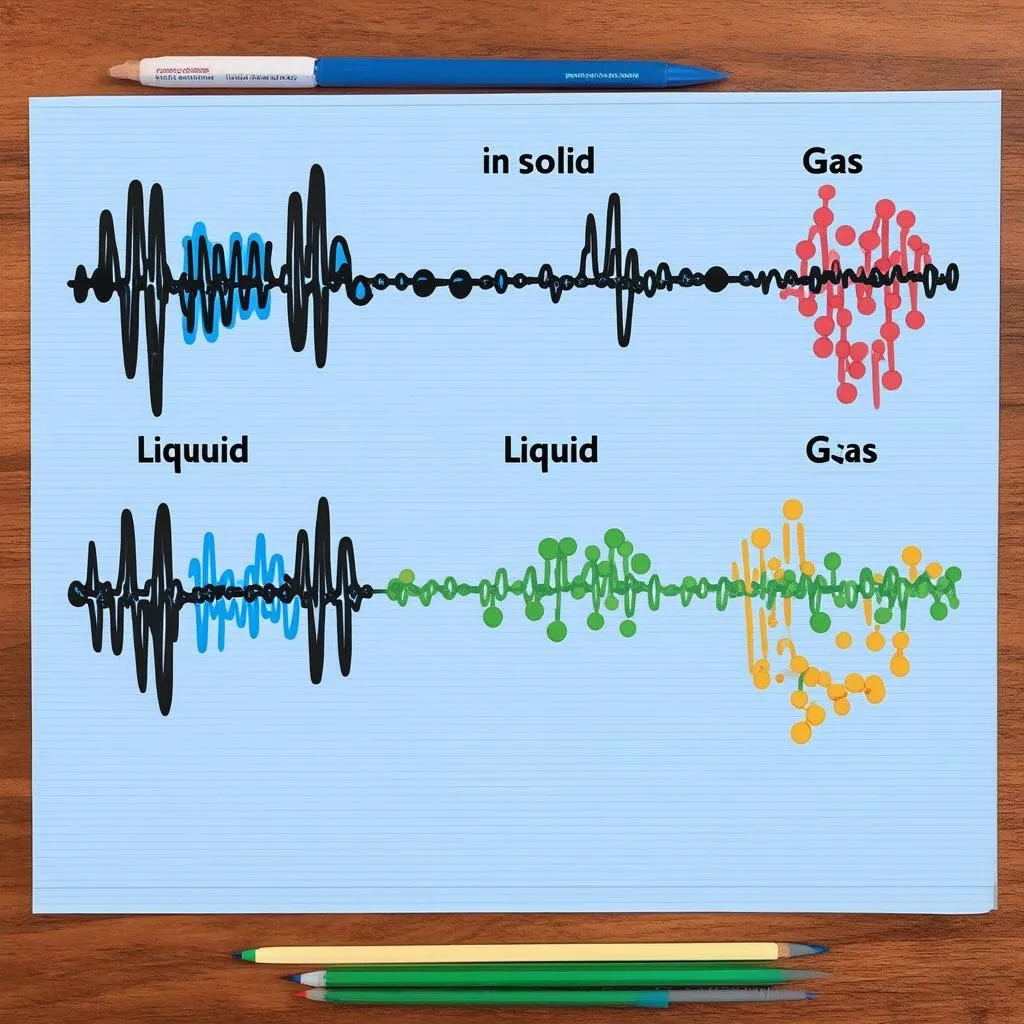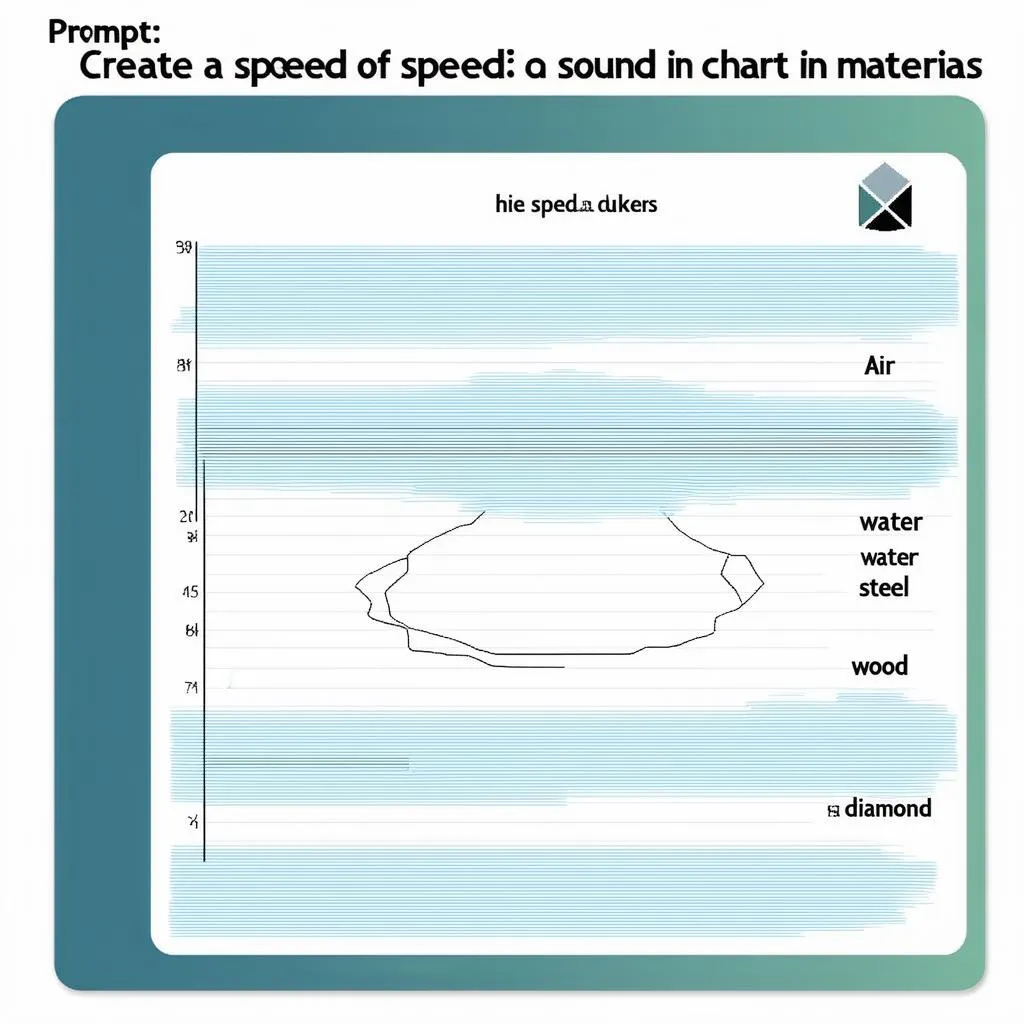Have you ever wondered why you can hear a train approaching by pressing your ear to the tracks long before you can hear it in the air? Or why tapping on a wall in one room can be heard so clearly in the next? It all comes down to how sound waves travel through different mediums. Today, we’ll unravel the mystery of why sound travels faster through solids and explore the fascinating science behind it.
The Science of Sound: It’s All About Vibrations
Sound, unlike light, isn’t an entity in itself. It’s a form of energy that travels in waves, created by vibrations. Imagine the iconic “Hollywood” sign in Los Angeles. If you could somehow shake those giant letters, they would vibrate, causing the air particles around them to vibrate too. These vibrations then travel outwards, like ripples in a pond, carrying the sound energy towards your ear.
Closer Together, Faster Sound
The speed at which these vibrations travel, and thus the speed of sound, depends on how closely packed the particles of a medium are. Solids, like the steel tracks of a train, have molecules tightly packed together. This tight arrangement allows vibrations to transfer quickly and efficiently from one molecule to the next, like a fast-moving chain reaction.
Liquids have molecules that are farther apart than solids, making sound travel slower through them. Gases, like the air we breathe, have the most spread-out molecules, resulting in the slowest sound travel.
Think of it like a game of telephone played with a line of people. The closer they stand, the faster a message can be whispered down the line.
Exploring Sound Travel in Different Mediums
To understand this concept better, let’s look at some examples:
- Solids: Sound travels fastest through solids. This is why you can hear someone tapping on a pipe much clearer and faster than you can hear them shouting from the same distance.
- Liquids: Sound travels slower in water than in solids but faster than in air. This is why whales can communicate over vast distances underwater.
- Gases: Sound travels slowest in gases. This is why you might see a firework explode in the sky a few seconds before you actually hear the boom.
The Role of Density and Elasticity
Apart from the closeness of molecules, two other factors influence sound speed:
- Density: Denser materials usually transmit sound faster. This is because denser materials have more inertia, meaning they resist changes in motion. Think about how much harder it is to push a heavy object than a light one.
- Elasticity: Elasticity refers to a material’s ability to return to its original shape after being deformed. Sound travels faster through more elastic materials. Imagine snapping a rubber band – the quicker it snaps back, the more elastic it is.
For instance, steel is both denser and more elastic than wood, which is why sound travels faster through steel.
 Sound Waves
Sound Waves
FAQs About Sound Travel
Here are some common questions people ask about why sound travels faster in solids:
Q: Does temperature affect the speed of sound?
A: Yes, generally, sound travels faster at higher temperatures. This is because warmer molecules move faster, allowing vibrations to transfer more quickly.
Q: What is the speed of sound?
A: The speed of sound is not constant. It varies depending on the medium and temperature. At room temperature, the speed of sound is approximately 343 meters per second (1,125 feet per second) in air.
Q: What is the fastest speed sound can travel?
A: The speed of sound is highest in a very stiff material like diamond, reaching up to 12,000 meters per second.
 Sound Speed Comparison
Sound Speed Comparison
Travel Plans? Explore More with Travelcar.edu.vn!
Sound travels faster through solids – it’s a scientific fact with fascinating implications for our world. From the rumbling of trains to the music we enjoy, understanding how sound behaves enriches our experiences.
Want to discover more intriguing travel-related facts and plan your next adventure? Be sure to check out these other interesting reads on Travelcar.edu.vn:
Happy travels and keep those curious minds exploring!